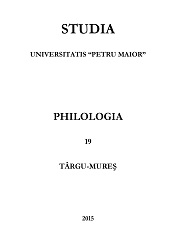Gândire şi comunicare în epoca modernă: sistemul lui Immanuel Kant
Thinking and Communicating in the Modern era: The System of Immanuel Kant
Author(s): Eugeniu NistorSubject(s): Metaphysics, Early Modern Philosophy, German Idealism, Ontology
Published by: Editura Arhipelag XXI
Keywords: metaphysical knowledge; Kantian apriorism; transcendental dialectic; the antinomies; the ontological argument;
Summary/Abstract: The inventive spirit of the thinker of Königsberg had manifested itself ever since the „pre-criticism” stage of his life, when he wrote and published several books, but was also dealing with cosmology, among other things, and published a unique work on celestial mechanics („Universal Natural History and Theory of Heaven”, 1755), a book which contains extremely valuable ideas to the history of science, as they configure that which at present constitutes the Kant-Laplace theory. His system of thought is found in his four basic philosophical works: „Critique of Pure Reason” (1781) – gnoseology, „Groundwork for the Metaphysics of Morals” (1785) and „Critique of Practical Reason” (1788) – contain his ethical doctrine, and the „Critique of Judgment” (1790) – include his esthetic concept and the issue of finality in organic nature. The detailed description of the gnoseological process in three steps (each one having a specific name: sensitive intuition, exaltation from direct contemplation to the analytical intellect, pure reason), the description of duty or practical reason from which the categorical imperative as a moral law is derived, and the description of „logic” and „communicable beauty” – is achieved through rational arguments and reveals a breathtaking systemic structure, which was rightly called later, not without admiration: „ Kant's steel scaffolding!”
Journal: Studia Universitatis Petru Maior. Philologia
- Issue Year: 2015
- Issue No: 19
- Page Range: 63-71
- Page Count: 9
- Language: Romanian

